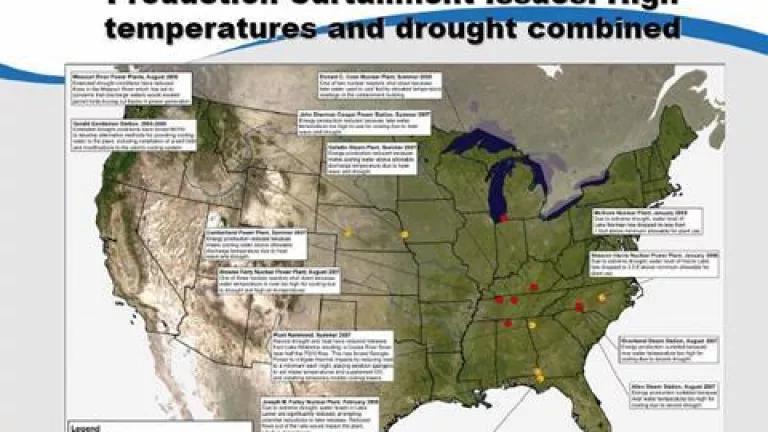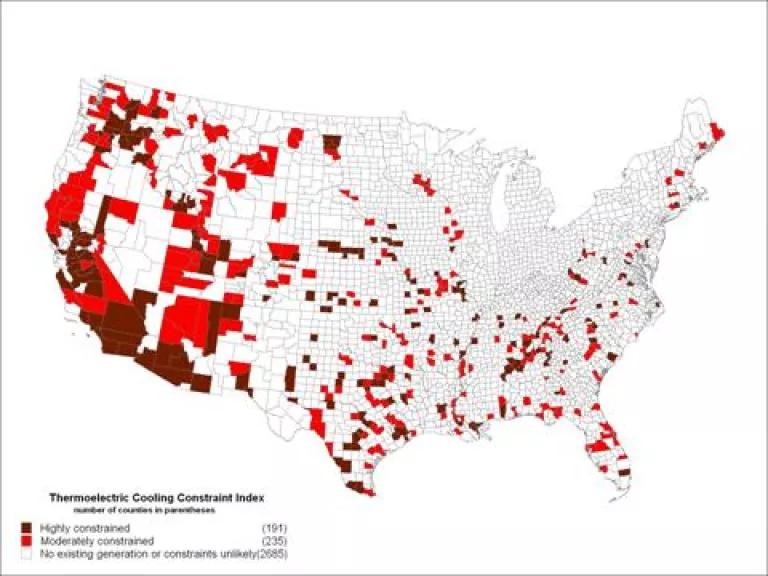
The Wall Street Journal notes today that some proposals to build new coal and nuclear plants are running into trouble because of concerns about the massive amounts of water these plants need to run.
Coal, nuclear and natural gas based power plants generate tremendous amounts of heat in order to boil water and create steam, the force of which turns a turbine which generates electricity. The heat is so intense that the power plants need to be cooled, much like a car engine needs a radiator and coolant to prevent overheating. This is why thermoelectric power plants are located on natural or man-made lakes, or on rivers - because they need a tremendous amount of cooling water to prevent overheating.
According to the United States Geological Survey (USGS),
About 52 percent of fresh surface-water withdrawals and about 96 percent of saline-water withdrawals were for thermoelectic-power use.
While much of the water used by power plants gets returned to the source it came from, if there isn't enough water available, plants run into trouble. An industry expert made this point at a conference last summer, with this slide:
But that's just current events. Going back to the issue raised in the Wall Street Journal, it is critical to know more about the relationship between future water supplies and power production.
EPRI studied this very question a few years ago, albeit incompletely. They commissioned an analysis that looked at projections of future electric demand, and overlaid that with data on local water supplies and other projected demands upon them. The result is the map below which shows the counties where the EPRI study indicates potential constraints on thermoelectric power plant development because of inadequate water supplies.

But this is in a way a 'best-case' scenario, since EPRI did not take into account the effect of rising temperatures on water availability. That's no small matter, according to researchers at Oak Ridge National Laboratory, who say that
"Climate change is likely to constrain thermoelectric generation in the 21st century by degrading cooling capability and power plant efficiency."
So there you have it: one more factor to consider as we work on creating a sustainable energy future based on clean energy.